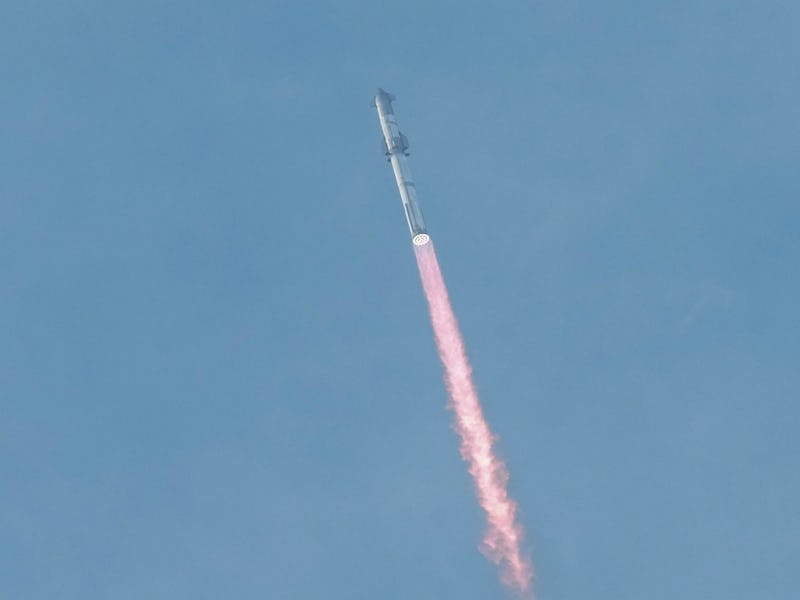NASA Was Watching SpaceX’s Starship Flight Closely — Here’s the Reason Why
Meet HLS Starship.

When the SpaceX Starship rocket sailed above Earth on Thursday, NASA paid close attention.
The space agency has already awarded at least $4 billion to the spaceflight company to develop the vehicle that will place its next set of Moonwalking astronauts to the lunar south pole later this decade.
In April 2021, SpaceX won NASA’s $2.89 billion contract to create the lunar lander for NASA’s 30-day Artemis III mission, currently scheduled for no earlier than September 2026, which would ferry two humans — including the first woman to walk on the Moon — to the icy lunar south pole for 6.5 days.
The SpaceX Starship spacecraft lifts off from Starbase in Boca Chica, Texas, on March 14, 2024.
Then in November 2022, NASA awarded SpaceX a modification contract worth $1.15 billion for the company to create a second crewed landing demonstration mission in 2027 for the Artemis mission that would follow, Artemis IV.
So when Starship sailed on Thursday for 49 minutes at sustained speeds of more than 26,000 kilometers per hour and performed several tests before burning up in the atmosphere and crashing into the Indian Ocean, it inspired congratulations from the space agency.
What will Starship do on the Moon?
When the Moon explorers of Artemis III aren’t out and about, gathering data on this hinterland, they’ll eat and sleep inside the Starship human landing system (or, HLS Starship) until the vehicle that took them to the Moon in the first place, NASA’s Orion capsule, completes a single lunar orbit.
Illustration of the SpaceX Starship human lander design.
Starship is the second critical leg in space that will make Artemis III the first to walk on the Moon in more than half a century.
The plan, at least thus far, begins when SpaceX launches a storage depot and propellant tanks into Earth orbit. Sometime later, Starship ascends, gets a refuel there, and eventually fires its six engines for a translunar injection burn to travel to the Moon. There it enters orbit, awaiting NASA’s quartet of a crew.
Next, NASA’s Space Launch System (SLS) rocket lifts off, carrying Orion and the four Artemis III astronauts onboard, into Earth orbit. Once an interim SLS stage fires, Orion will sojourn towards the Moon, to meet HLS Starship in an orbit called NRHO.
The Orion capsule that flew on Artemis I captured this image of the Moon’s far side on December 5, 2022.
Short for near-rectilinear halo orbit, NRHO was NASA’s pick from hundreds of possible orbits for the Artemis program because it allows for almost continuous communications between Earth and the Moon. NRHO also helps the spacecraft save on fuel, because it’s where Earth and the Moon’s gravities interact.
As astronauts enter Starship to reach the lunar south pole, two others will travel along NRHO inside Orion, and they’ll take about a week to complete a single lap.
At that time, Starship will need to ascend back into space, rendezvous with Orion so it can dock, and allow the four Artemis III astronauts to finish their final checks over the course of about five days until Orion finally departs back to Earth.
Starship’s progress
Before Starship evolves into a working HLS Starship, SpaceX must perform more flights. And among the tests left to conduct is an in-orbit re-light demo, where Starship will reignite its engines after coasting to prove it can prepare for a deorbit or ace a trans-lunar injection.